Guojun Han
Joint Mode Selection and Beamforming Designs for Hybrid-RIS Assisted ISAC Systems
Dec 05, 2024Abstract:This paper considers a hybrid reconfigurable intelligent surface (RIS) assisted integrated sensing and communication (ISAC) system, where each RIS element can flexibly switch between the active and passive modes. Subject to the signal-to-interference-plus-noise ratio (SINR) constraint for each communication user (CU) and the transmit power constraints for both the base station (BS) and the active RIS elements, with the objective of maximizing the minimum beampattern gain among multiple targets, we jointly optimize the BS transmit beamforming for ISAC and the mode selection of each RIS reflecting element, as well as the RIS reflection coefficient matrix. Such formulated joint hybrid-RIS assisted ISAC design problem is a mixed-integer nonlinear program, which is decomposed into two low-dimensional subproblems being solved in an alternating manner. Specifically, by using the semidefinite relaxation (SDR) technique along with the rank-one beamforming construction process, we efficiently obtain the optimal ISAC transmit beamforming design at the BS. Via the SDR and successive convex approximation (SCA) techniques, we jointly determine the active/passive mode selection and reflection coefficient for each RIS element. Numerical results demonstrate that the proposed design solution is significantly superior to the existing baseline solutions.
Simultaneously Transmitting and Reflecting RIS Assisted Over-the-Air Computation Systems
Jan 05, 2023Abstract:The performance of over-the-air computation (AirComp) systems degrades due to the hostile channel conditions of wireless devices (WDs), which can be significantly improved by the employment of reconfigurable intelligent surfaces (RISs). However, the conventional RISs require that the WDs have to be located in the half-plane of the reflection space, which restricts their potential benefits. To address this issue, the novel family of simultaneously transmitting and reflecting reconfigurable intelligent surfaces (STAR-RIS) is considered in AirComp systems to improve the computation accuracy across a wide coverage area. To minimize the computation mean-squared-error (MSE) in STAR-RIS assisted AirComp systems, we propose a joint beamforming design for optimizing both the transmit power at the WDs, as well as the passive reflect and transmit beamforming matrices at the STAR-RIS, and the receive beamforming vector at the fusion center (FC). Specifically, in the updates of the passive reflect and transmit beamforming matrices, closed-form solutions are derived by introducing an auxiliary variable and exploiting the coupled binary phase-shift conditions. Moreover, by assuming that the number of antennas at the FC and that of elements at the STAR-RIS/RIS are sufficiently high, we theoretically prove that the STAR-RIS assisted AirComp systems provide higher computation accuracy than the conventional RIS assisted systems. Our numerical results show that the proposed beamforming design outperforms the benchmark schemes relying on random phase-shift constraints and the deployment of conventional RIS. Moreover, its performance is close to the lower bound achieved by the beamforming design based on the STAR-RIS dispensing with coupled phase-shift constraints.
Dynamic Write-Voltage Design and Read-Voltage Optimization for MLC NAND Flash Memory
Sep 03, 2022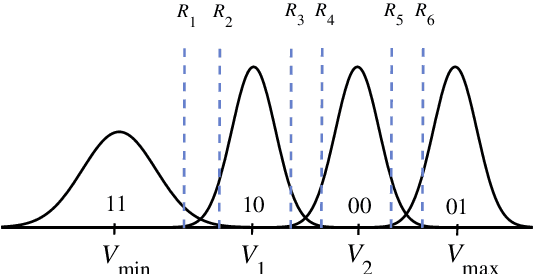

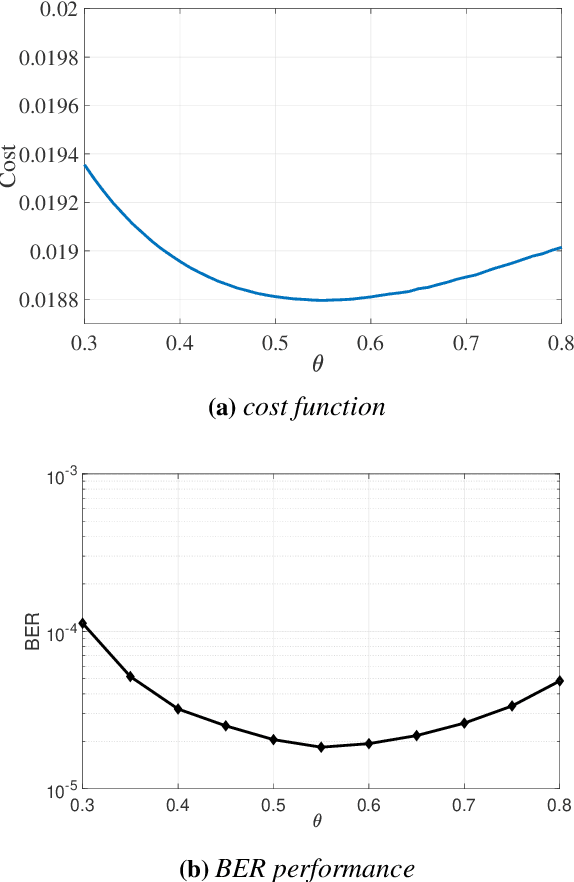
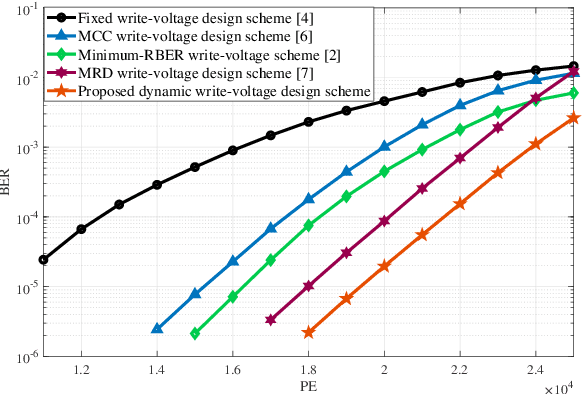
Abstract:To mitigate the impact of noise and interference on multi-level-cell (MLC) flash memory with the use of low-density parity-check (LDPC) codes, we propose a dynamic write-voltage design scheme considering the asymmetric property of raw bit error rate (RBER), which can obtain the optimal write voltage by minimizing a cost function. In order to further improve the decoding performance of flash memory, we put forward a low-complexity entropy-based read-voltage optimization scheme, which derives the read voltages by searching for the optimal entropy value via a log-likelihood ratio (LLR)-aware cost function. Simulation results demonstrate the superiority of our proposed dynamic write-voltage design scheme and read-voltage optimization scheme with respect to the existing counterparts.
A New Frequency-Bin-Index LoRa System for High-Data-Rate Transmission: Design and Performance Analysis
Mar 29, 2021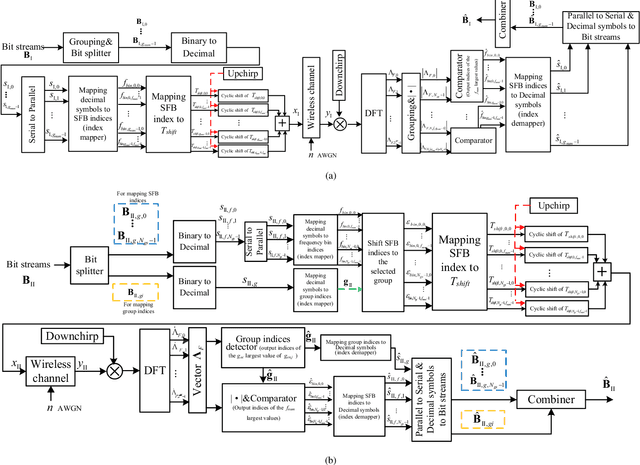
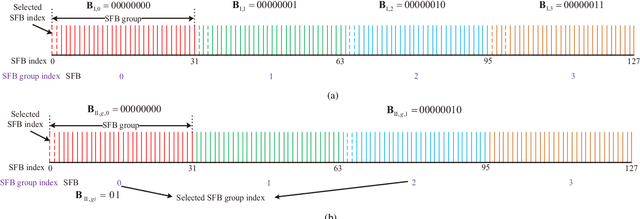
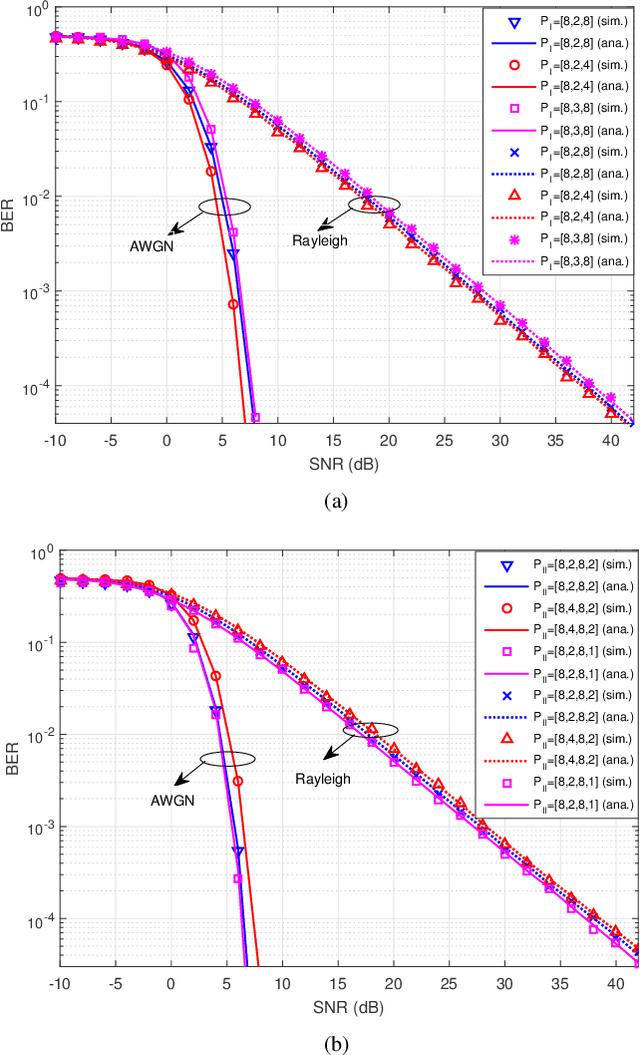
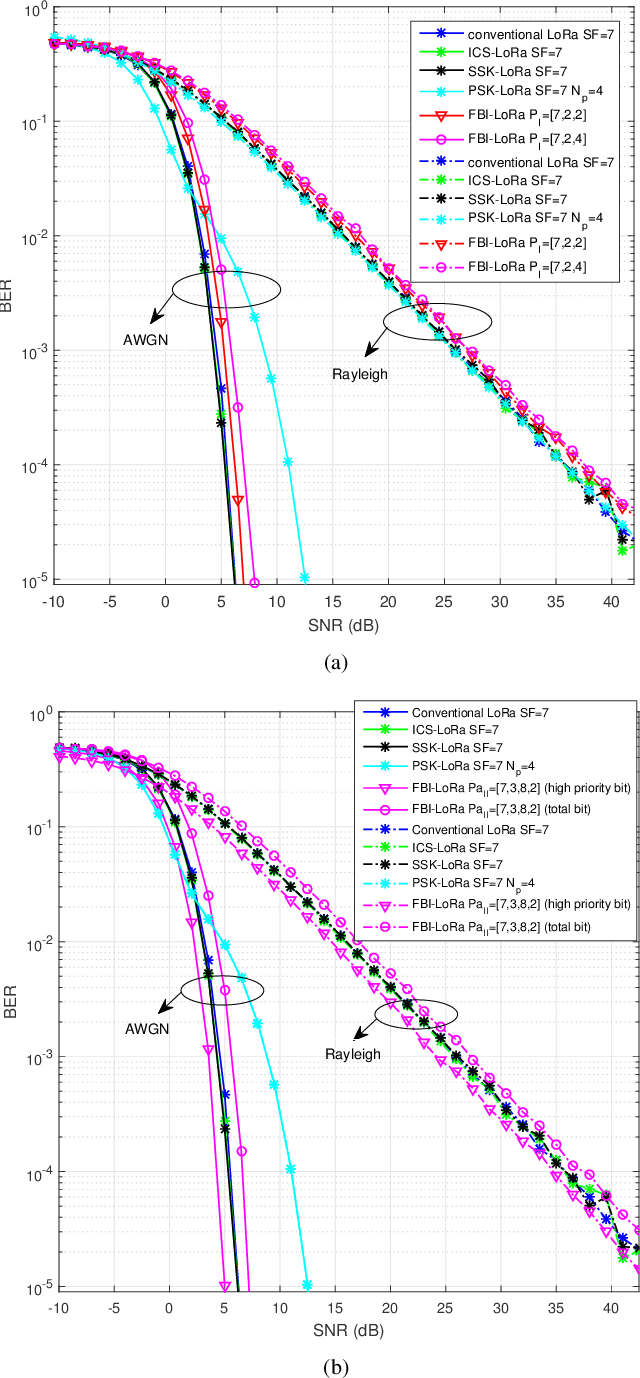
Abstract:As an attempt to tackle the low-data-rate issue of the conventional LoRa systems, we propose two novel frequency-bin-index (FBI) LoRa schemes. In scheme I, the indices of starting frequency bins (SFBs) are utilized to carry the information bits. To facilitate the actual implementation, the SFBs of each LoRa signal are divided into several groups prior to the modulation process in the proposed FBI-LoRa system. To further improve the system flexibility, we formulate a generalized modulation scheme and propose scheme II by treating the SFB groups as an additional type of transmission entity. In scheme II, the combination of SFB indices and that of SFB group indices are both exploited to carry the information bits. We derive the theoretical expressions for bit-error-rate (BER) and throughput of the proposed FBI-LoRa system with two modulation schemes over additive white Gaussian noise (AWGN) and Rayleigh fading channels. Theoretical and simulation results show that the proposed FBI-LoRa schemes can significantly increases the transmission throughput compared with the existing LoRa systems at the expense of a slight loss in BER performance. Thanks to the appealing superiorities, the proposed FBI-LoRa system is a promising alternative for high-data-rate Internet of Things (IoT) applications.
 Add to Chrome
Add to Chrome Add to Firefox
Add to Firefox Add to Edge
Add to Edge